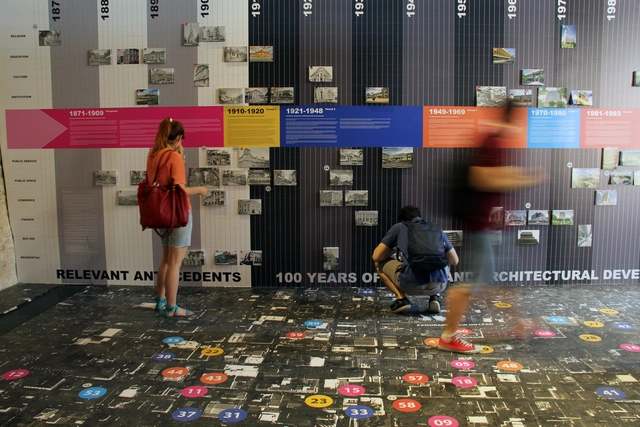
In Bahrain's pavilion for the 2014 Venice Biennale, the country uses its position on the eastern edge of the pan-Arabic region to investigate modernity's impact on the Arab world: first as a colonial imposition, then as a local attempt to reconcile global and Arabic culture, then finally as an acceptance of neoliberal ideals.




















